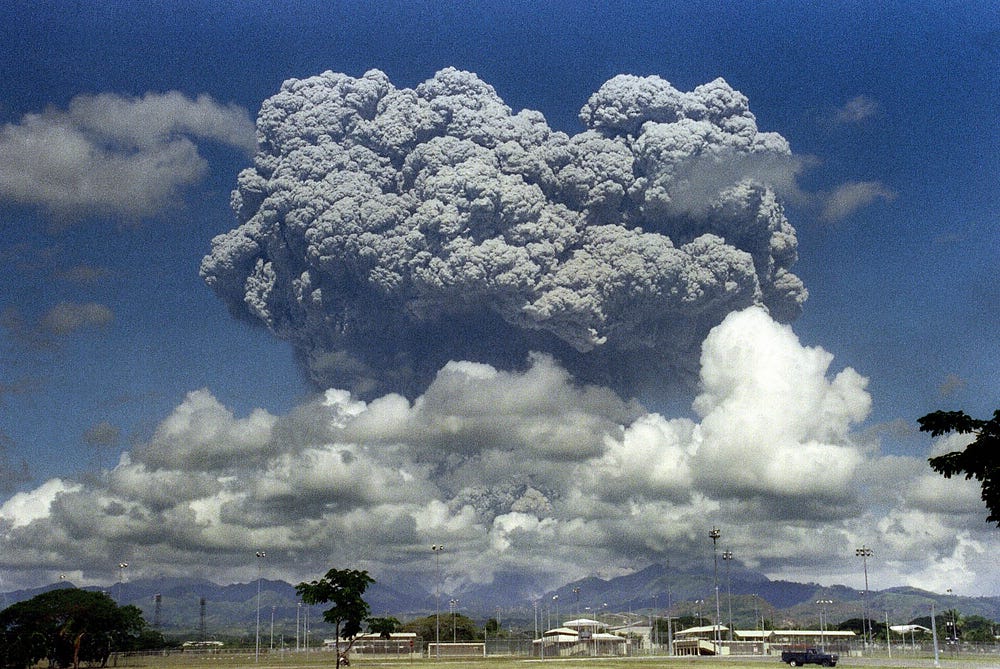Should we try to fix global warming with fake volcanic eruptions? TBD.
There could be unintended consequences.

With heat-trapping carbon emissions on the rise again, researchers are looking for ways to turn down the thermostat while humanity gets itself under control. One potential solution? Try to copy volcanic eruptions. But in addition to adjusting the temperature, such practices could change the frequency of hurricanes, or the location of droughts.
When explosive volcanic eruptions occur — like the one at Mount Pinatubo in 1991 — they send small particles of ash and gas high into the atmosphere. These so-called aerosols block and reflect sunlight, providing a temporary cold compress to the Earth’s rising temperatures.
After years of watching volcanos go through the motions, some researchers are looking into whether they can use that same method to help cool down the planet — an idea known as solar geoengineering. But a set of studies published this month show just how complicated a proposition that might be.
“Sulfur dioxide is emitted by volcanic eruptions. It’s also relatively cheap and relatively common, so it’s the natural candidate for solar geoengineering,” says Anthony Jones, author of a recent Nature Communications study on the subject. “It’s basically copying a volcanic eruption, and then extending the injection of the aerosols into the atmosphere.”
Sulfur dioxide is a common occupant of the dramatic cloud that follows an Earthly eruption, and when it gets into the atmosphere it expands and reacts with other chemicals — including water — to form aerosol particles, which can reflect sunlight back into space and cool the Earth below.
…click on the above link to read the rest of the article…